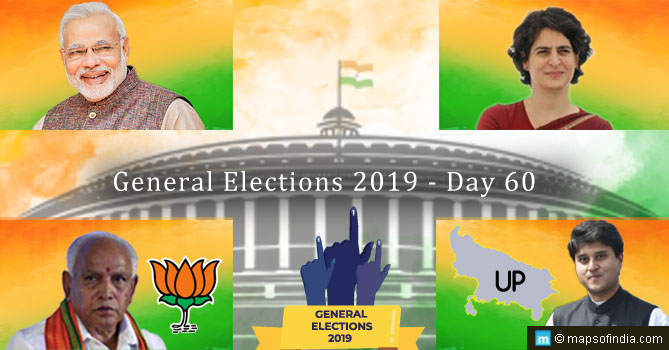The background of the Zakia Jafri case:
The fuse was ignited on the fateful morning of 27th February, 2002, when the Sabarmati Express, carrying Hindu activists from Ayodhya, had pulled in the railway station of Godhra, Gujarat. This train was set on fire by a group of Muslims, claiming the lives of 58 people who were charred to death. The Godhra incident had left the population of the country stunned, but at that time the nation had no inkling, whatsoever, that the train burning was merely the stage being set for an unthinkable barbaric bloodbath that will haunt the population of Gujarat and the nation as a whole for years to come.
The 2002 Gujarat communal violence, which according to some experts was a direct retaliation of the train burning incident, continued for three days in different parts of Gujarat , followed by instances of communal riots in Ahmedabad, which continued for three weeks followed by three months of communal violence in different parts of the state. The official body count was 1044, which included 790 Muslims and 254 Hindus, with 2500 people injured and 223 more missing. The riots were more grisly because there was a targeted attack on Muslim children and women. While the children were set on fire alive, there were numerous instances where Muslim women were subjected to brutal sexual violence. There were many reported cases of gang rapes, disembowelment of pregnant Muslim women with sharp weapons and removal of the fetuses by sticking them on the sword tips before killing these women.
The Gulbarg Massacre was a part of the communal atrocities, committed in Vadodara. It had been reported that, the late Congress MP Ehsan Jafri had implored the attackers of the Gulbarg Housing Society to spare the women and children upon which he was paraded naked in front of the society. Yet when he still refused to hail ‘Jai Shri Ram’ he was decapitated and the bodily remains were thrown into fire.
Zakia Jafri Case
Zakia Jafri happens to be the widow of Ehsan Jafri, the former Congress MP and one of the victims of the Gulbarg Society Massacre in 2002, in which 69 people were killed following the Godhra incident. Zakia Jafri was chasing the issue that Narendra Modi and the others indicted in the 2002 riot cases should be made to stand trial for conspiracy of the initiation of the communal violence that tore Gujarat apart in 2002. However, a magistrate’s court in Ahmedabad gave a verdict against the appellant Zakia Jafri’s efforts to challenge the case closure report of the Special Investigative Team (SIT), which had given Narendra Modi and 58 others a clean chit regarding their alleged involvement in the 2002 riot cases of Gujarat.
Given below is a brief description of the court proceedings of the case of Zakia Jafri from 2002 till date.
- On February 28th, 2002 Gulbarg Society, essentially an upper middle class Muslim housing society, was burnt to cinders by a mob resulting in the death of 69 people including Ehsan Zafri. On June 8th , 2006 Zakia Jafri, widow of Ehsan Jafri furnished a complaint accusing police inaction of denouncing FIRs against Narendra Modi and 62 other individuals, which included ministers and a number of top administrative officials of Gujarat. The police, however, refused to acknowledge the complaint.
- Following this, Zakia had taken her appeal to the Gujarat High Court but her pleas were brushed off and she was instructed to pursue the case in a magistrate’s court. She, however, decided to take her appeal to the Supreme Court
- On March 26th, 2008, the Supreme Court (SC) had ordered a fresh investigation into the nine cases pertaining to the 2002 riots of Gujarat. A Special Investigative Team (SIT) was appointed with the ex – CBI Director R K Raghavan as the chairperson for the said investigations. The SIT was also ordered to probe into the Gulbarg Society Incident with specific instructions to reassess Zakia’s accusations regarding the involvement of Narendra Modi and the other alleged individuals.
- On September 2009, the SC had nullified the stay orders on the major cases pertaining to the riots including the Gulbarg Society Incident.
- On March 27th, 2010 Narendra Modi was made to appear before the SIT following which he was subjected to several hours of intensive interrogation.
- On May 14th, 2010 SIT had submitted its investigation report to the Supreme Court. The report had clearly stated that, the investigations into the matter failed to unearth any evidence against the alleged individuals regarding their involvement in the communal violence case
- On March 11th, 2011, the apex court had directed the SIT to resolve the uncertainties raised by the advisor to the court, one Raju Ramchandran (Amicus Curiae).
- Raju Ramchandran had visited Ahmedabad on June 18th, 2011 in an attempt to prepare a separate report on the riots based on his interviews with the key witnesses and other concerned people.
- On July 25th, 2011, Raju Ramchandran furnished his report which turned out be quite different from the concluding report of the SIT and as per his reports, an impeachment of Narendra Modi was possible on the basis of the existing evidences.
- On July 28th, 2011 Supreme Court had declared to keep the Amicus Curiae report confidential even to the SIT and the Gujarat Government.
- On September 12th, 2012, SC had instructed the magisterial court to determine whether Modi and the others alleged in the case could be investigated further on the basis of the concluding report of the SIT.
- On February 8th, 2011 SIT had furnished a report before the magisterial court in Ahmedabad, summarizing its investigations. On February 9th, 2012 Zakia Jafri and Teesta Setalvad, Secretary of the NGO – Citizens for Justice and Peace, had made a move in court in an attempt to gain access to the SIT report. SIT, however, had objected to such move citing that the report submitted in court was incomplete.
- On February 15th, 2012 Magistrate of the Metropolitan court had ordered SIT to submit its full report, including the case papers, testimonies recorded from the key witnesses and other pertaining documents and by March 15th, 2012 SIT had submitted the full report.
- After studying the full case report of the SIT, the magisterial court had declared on April 10th, 2012 that, as per the report the case is considered closed in the absence of any tangible evidence against the accused named in the petition of Zakia Jafri. The court had also ordered SIT to furnish Zakia Jafri with a copy of the case report within a month’s time.
- In April 2013, Zakia Jafri had challenged the SIT case closure report in a protest plea filed before the Metropolitan Court.
- As of October 2013, the Metropolitan Court had adjourned its ruling but finally on December 26th, 2013 the court verdict had gone against Zakia Jafri’s plea with no case being framed against Narendra Modi.
Conclusion:
After the court’s verdict a dejected and broken down Zakia Jafri but not yet defeated, had vowed to pursue her petition again within a month’s time. The petition of Zakia Jafri highlights a few aspects of the case which are in congruence with the opinions of several international experts. While the international experts opined that the train burning incident was in fact a ‘staged trigger’ and the ensuing communal violence could not have assumed such colossal proportions without the assent of the Government of Gujarat and the communal killings were, in fact, an excuse for ‘ethnic cleansing’, the petition pulls the focus on the halfhearted inquiries of the SIT. It is, a fact that, the SIT investigations had many loopholes – for instance the SIT had carefully omitted the investigations of Narendra Modi’s mobile phone records.
Narendra Modi being the Chief Minister of Gujarat, was also the Home Minister of the state during the riots. With access to the military and the paramilitary and not to mention entire police force of Gujarat at his immediate disposal, he was just a trifle late in deploying the forces to contain the violence. Whether this lateness was intentional giving enough time for the Hindu extremism to take its due course or whether it was just a lack of administrative reflex, remains a highly debatable issue. Such circumstances evidently pose the question whether Narendra Modi really deserves a clean chit or not!




